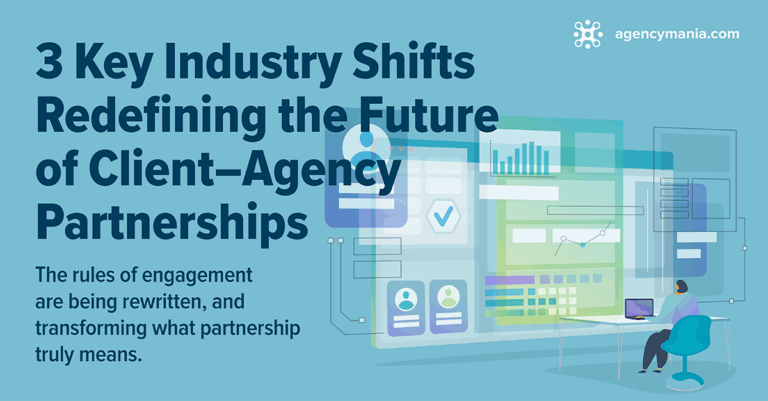Download a print-friendly version here
This Piece of Cardboard Will Take You Halfway Around the World
Advertising is dead, long live branded content!
Advertising was king. A new monarch is now succeeding it
to the marketing throne: branded content. For the history aficionados, the original phrase (“The King is Dead, Long Live the King!”) was translated from French and was first declared upon the accession to the French throne of Charles VII a er the death of his father Charles VI in 1422. This declaration is official and marks the ascension of a new monarch immediately a er the death of the old. That’s exactly what is happening to advertising as we know it.
Fast forward to today and the Cannes International Festival of Creativity. The New York Times just won the Grand Prix for Mobile for its VR app campaign in partnership with Google. It incorporates news stories like “The Displaced,” as well
as efforts from two marquee brands — GE and Mini. The two companies also produced breathtaking VR movies for the viewers (“Nature Is Inspiring Our Industrial Future” and “Backwater,” respectively). The New York Times distributed over 1.3 million Google Cardboards to its subscribers, the largest Google Cardboard project, and as a result, the largest ever roll out and distribution of VR technology. The results are impressive: over 600,000 downloads of the NYT VR app since its launch in November and 1.5+ million NYT VR content views. How did they pull it o ? T Brand Studio, the brand marketing unit of the New York Times, put this effort together, along with a few other players like VRSE.works and others.
This is a great example of brand advertisers looking to connect with consumers in new, more engaging and more meaningful ways than traditional advertising. It’s not just about VR, which is receiving much a en on by technology players, publishers and media companies trying to push VR content and new ways to produce that content. The real winner is the explosion of branded content, no ma er what forms it takes. To illustrate that point, Cannes Lions just introduced a new category of Lions called “The Entertainment” to recognize amazing work that cuts through and connects, converting consumers into fans and content into culture. According to Forbes’ Chief Insights Officer Bruce Rogers, content marketing accounts for roughly 25% of a CMO’s marketing budget. The overall U.S. market for content marketing was estimated at over $67 billion in 2014 and up to $144 billion once internally generated content activities were included, according to PQ Media.
A growing number of publishers build branded content creation in-house for advertisers, competing with agencies to address the need for native ad solutions.
- Cable programmer Turner introduced a new native advertising unit at the Consumer Electronics Show to help replace the traditional five to 10 30-second spots during a program with less disruptive, long-form branded content two to three minutes long that tells a brand story.
- Tribune Publishing launched Tribune Content Solutions, an in-house agency composed of editors, writers, marketers and strategists tasked to create multi platform campaigns.
- Time Inc. recently launched The Foundry, a new cross- channel creative shop.
- The New Republic launched a new in-house content marketing agency called Novel.
- Condé Nast’s in-house branded content studio, 23 Stories, partnered with Cadillac to create and distribute editorial and branded content, including articles and long- and short-form video for distribution across Condé Nast’s digital network.
- Coty acquired London-based content-marketing agency Beamly to strengthen its in-house creative and analytics capabilities, as well as create engaging, shareable social content.
- Billboard and The Hollywood Reporter launched Adapt Studios, a branded content division focused on entertainment and music.
- Yahoo is promoting Storytellers, its content marketing studio for brands and agencies, which gives them access to the company’s editorial team as well as its 165 billion daily data points.
Brands are also bringing production in-house, especially digital content production, to facilitate more branded content creation.
- Sprint announced its newly formed internal agency called YellowFan Studios.
- PepsiCo’s new content studio, called Creators League, produced branded content while also pursuing distribution deals with lm studios, online publishers and other outlets for brand-agnostic content.
“Le roi est mort, vive le roi!” (French version of “The King is Dead, Long Live the King!”).
If content is not high on your list, it should be. Advertisers moving aggressively into branded content must s ask themselves some daunting questions: How do you avoid the risk of cranking out too little content? How do you make sure the content is always engaging and relevant? How do you restructure your internal organization, your vendor ecosystem and your communication processes to produce faster, be er, richer content? Which partner is most qualified to help me produce be er content? Should we rely on our creative agency or outsource to the studios of these publishers, which have in mate knowledge of their channels and how their audiences consume them?
Agencies are also building stronger content capabilities to meet the evolving needs of their clients. MEC recently unveiled a worldwide specialist content unit called Wavemaker. Publicis Groupe acquired creative content agency August to allow the agency to develop content quickly across multiple platforms. Are you providing adequate disclosure when using editorial content for promotional purposes? The lines are getting so blurry that the FCC recently produced a guide that makes sure consumers aren’t being misled as editorial content and ads increasingly look the same. The list goes on.
“Great marketing isn’t about one ad, one piece of content, one moment in me. … It is about a relentless and lasting commitment to a brand’s story.” – Susan Credle, global chief creative officer, FCB






